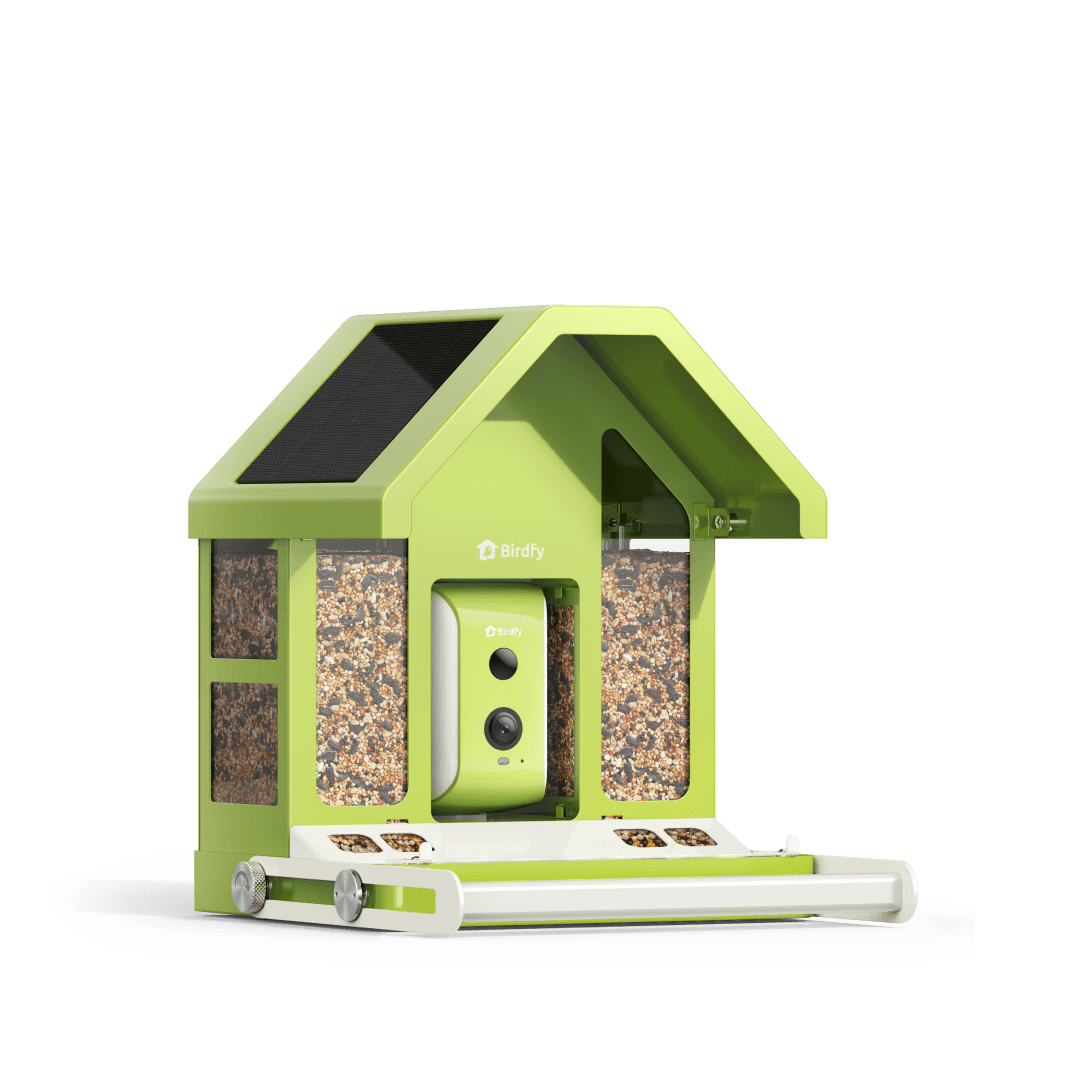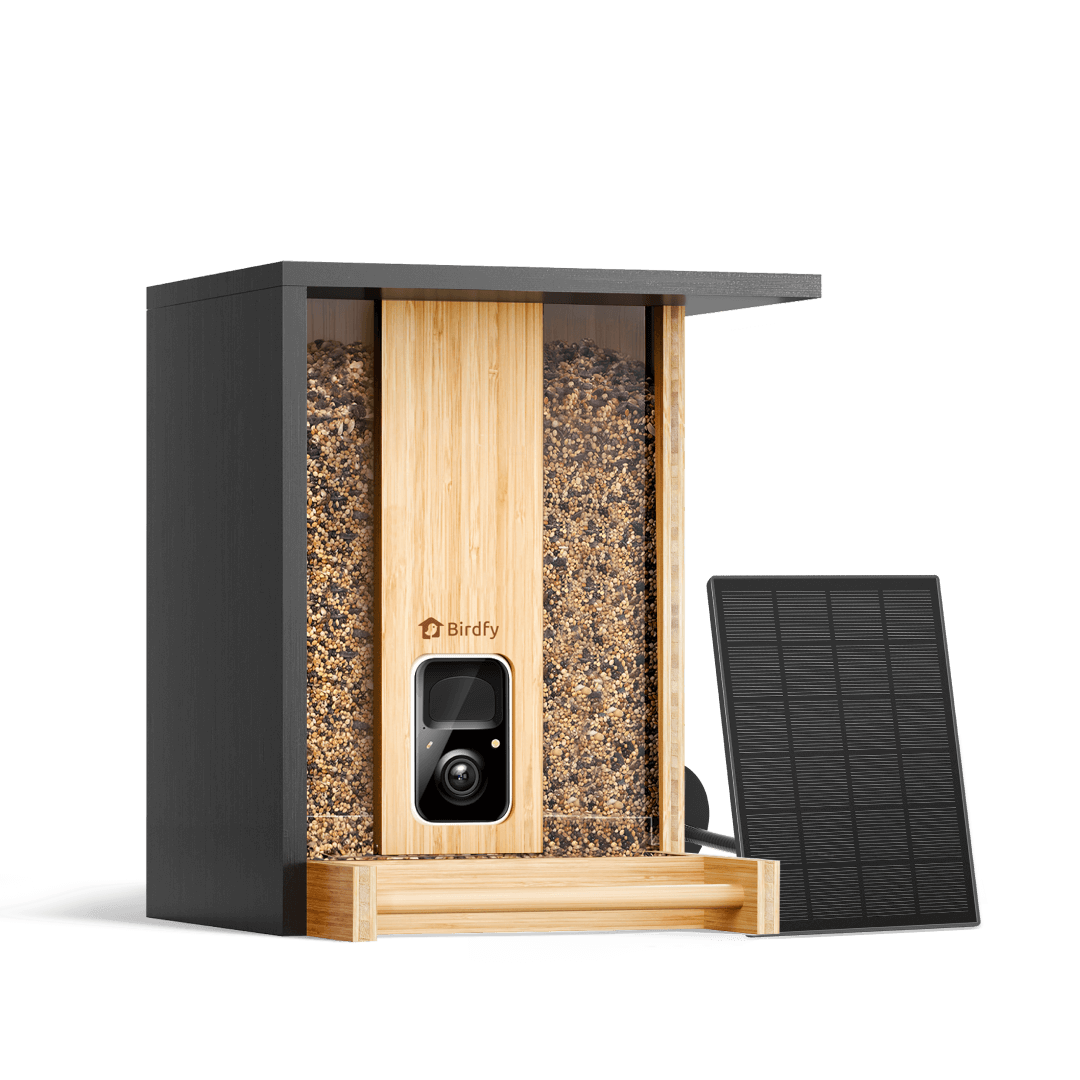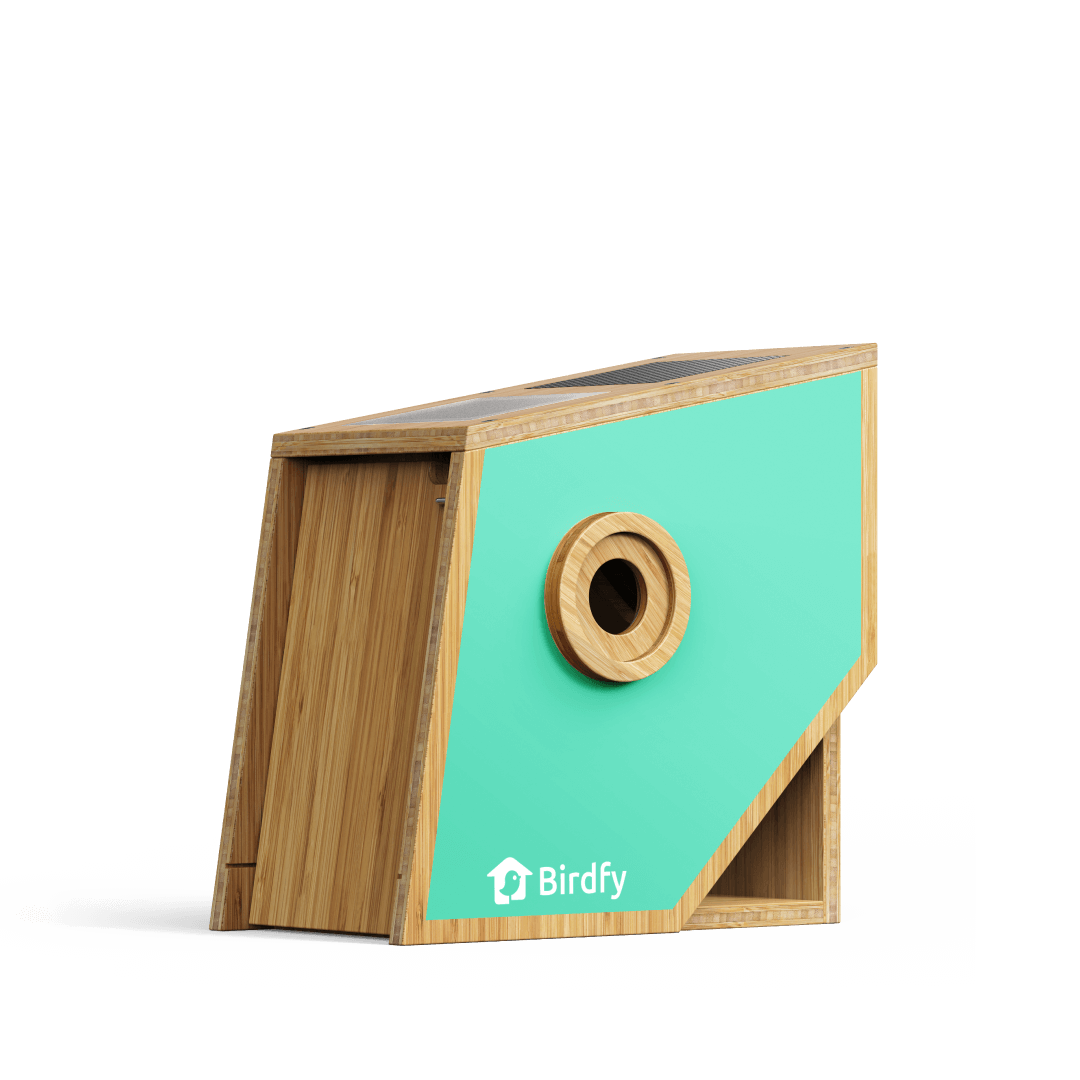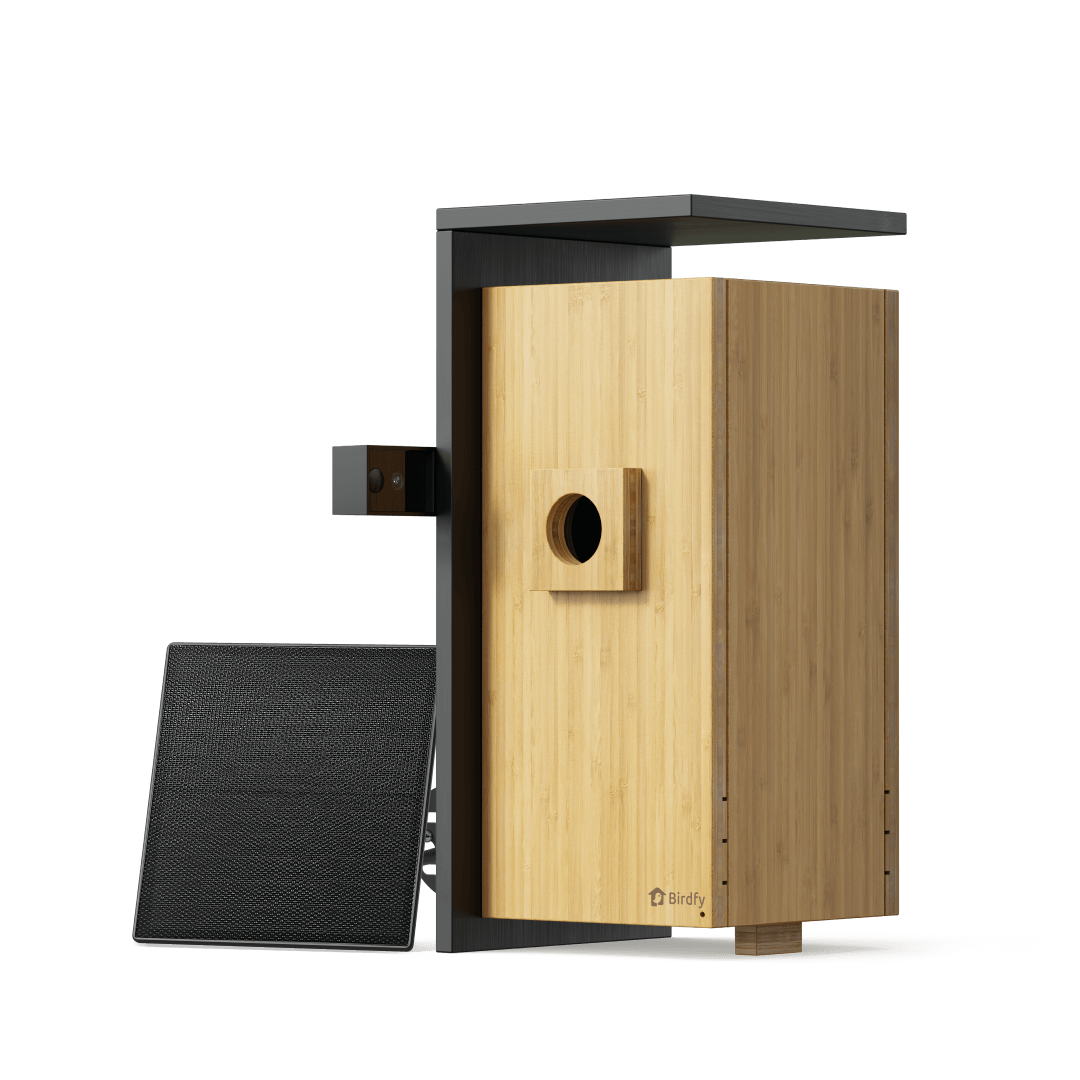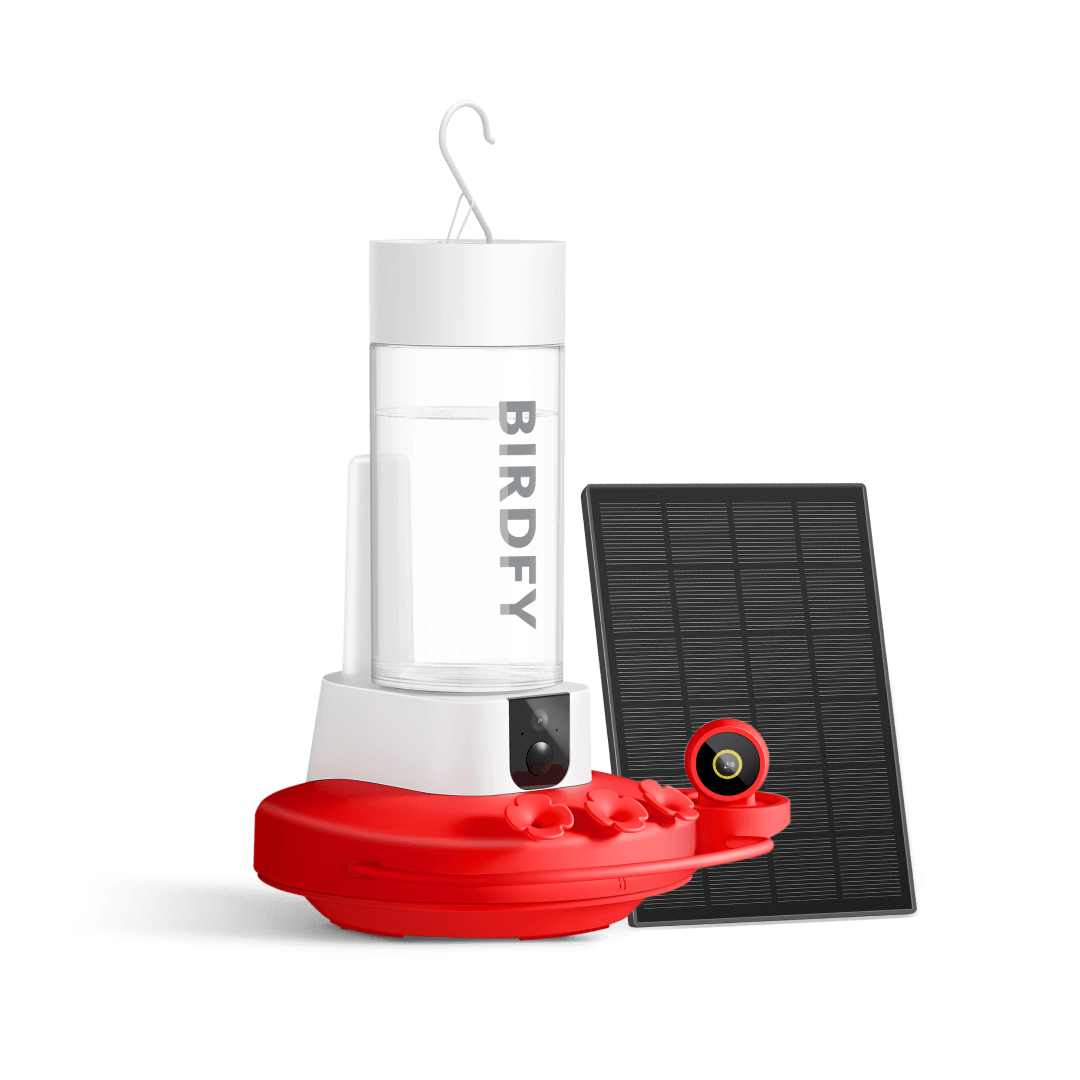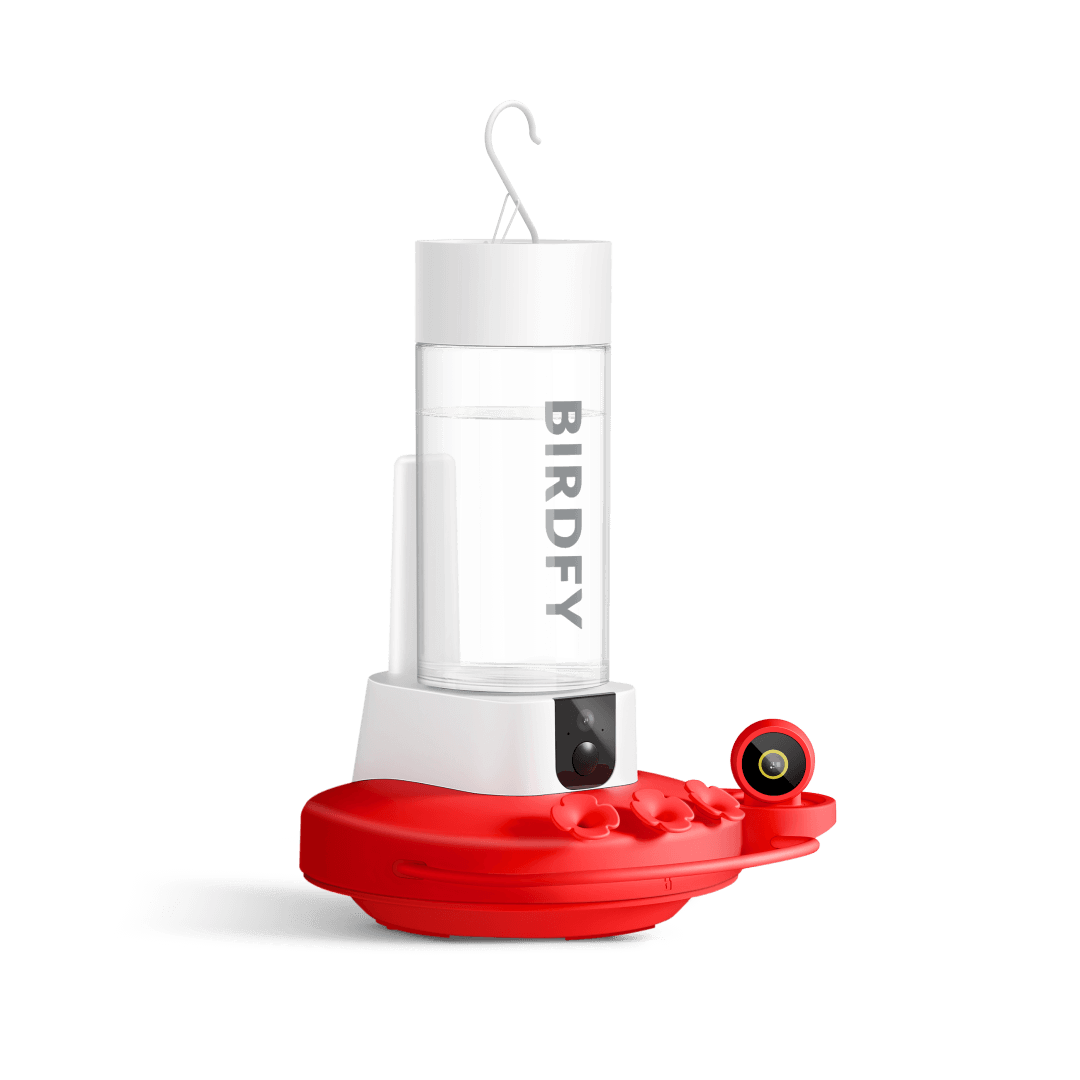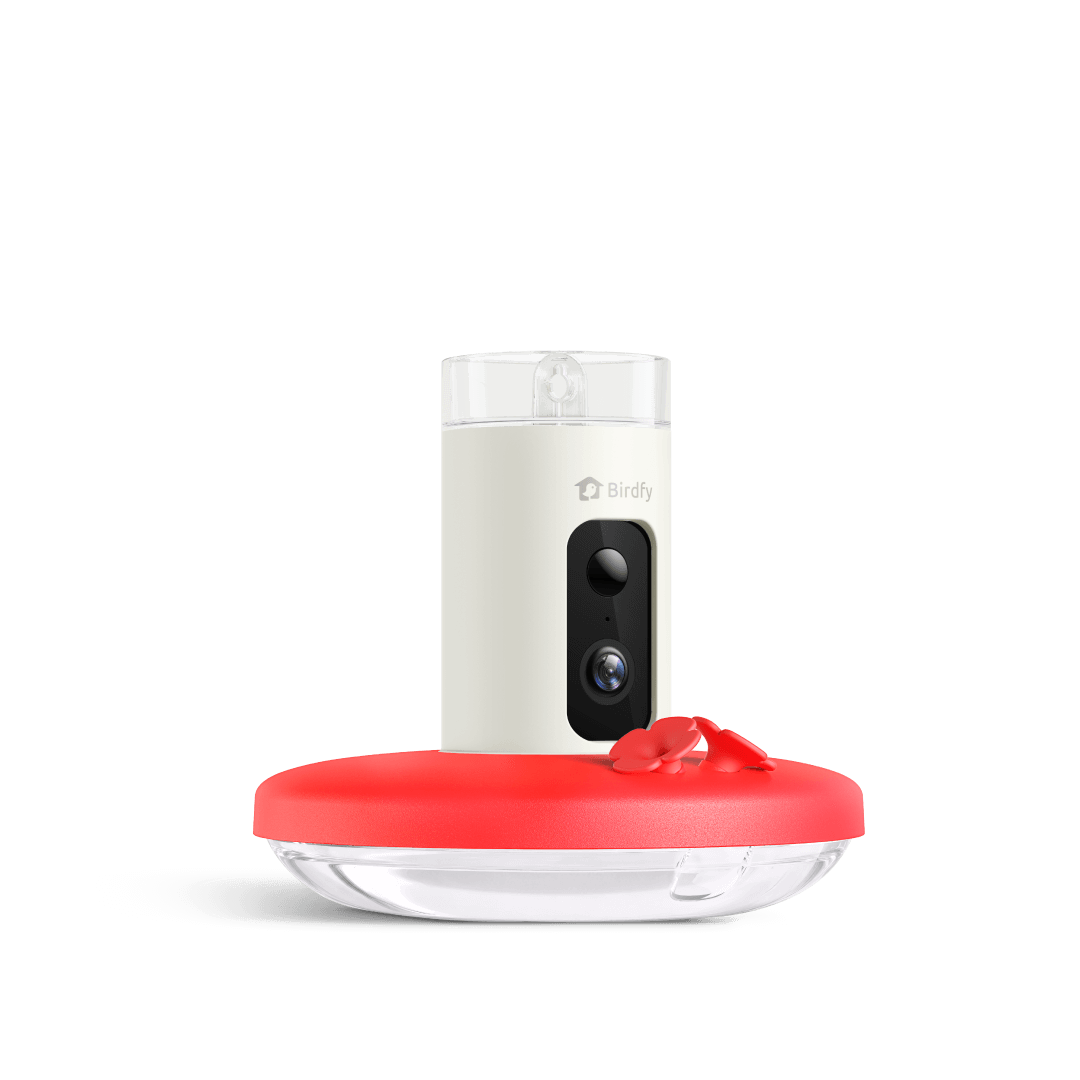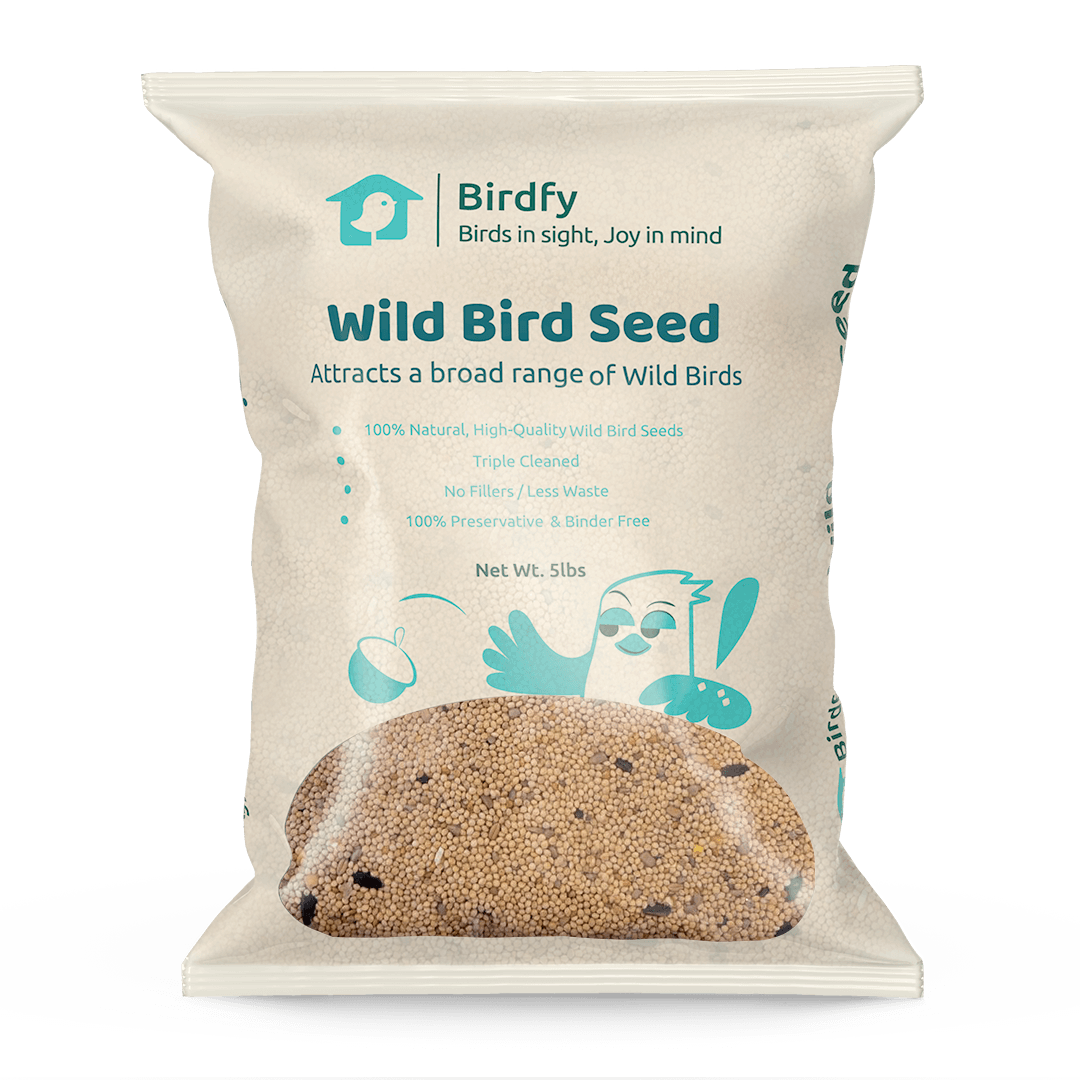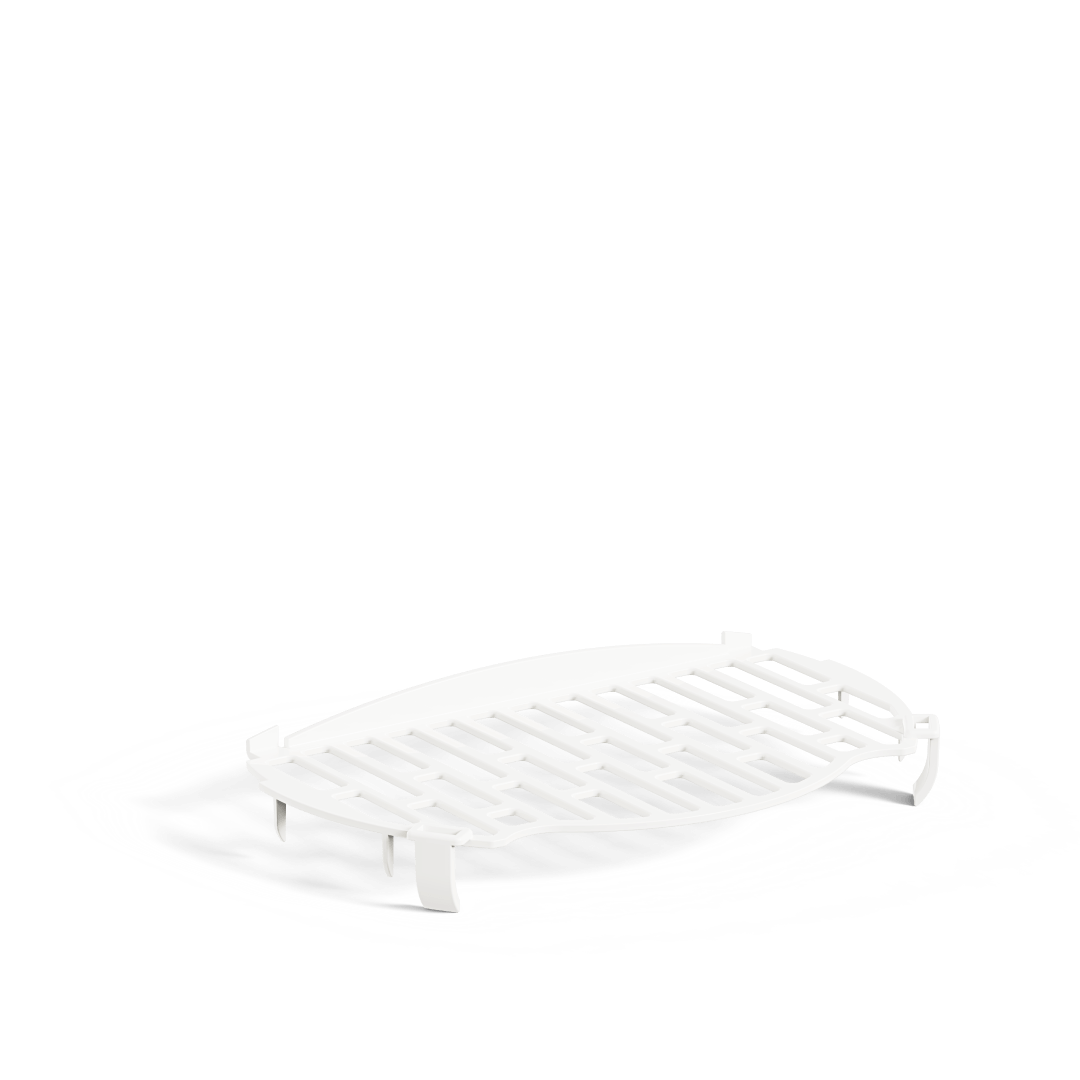Learn how to identify bird eggs with a complete chart
A bird egg identification chart is an essential tool, and it must be effectively designed so that birdwatchers, educators, and conservationists can use it effectively. Nesting season is a delight as one goes out to discover eggs in the wild, but it may be a beautiful puzzle: which bird laid which egg?
In this article, we provide a detailed bird egg ID chart to acquaint you with egg color, size, shape, marking, and clutch size, which are essential clues to recognize bird eggs properly.
First, let’s use a bird egg ID chart to summarize the 20 most popular bird eggs listed in this article:

The details of 20 bird eggs that are chosen in our bird egg ID chart are as follows:
American Robin
The American Robin has sky-blue and smooth-shelled eggs that are commonly found in cup-shaped nests close to trees or shrubs. The female is also aggressive in protecting her nests, which are made of grass and mud. Their blue eggs are unmarked and are laid in spring.
- Egg Size: 2.8 x 2.1 cm
- Egg Weight: ~6 g
- Clutch Size: 3–5 eggs
- Nesting Season: April–July

Blue Tit
Blue Tits have smooth, pale eggs with fine red speckles. Their eggs are usually found in nest boxes or holes in trees and are well-hidden against predators. Blue tits rely much on insects during nesting and prefer gardens and woodlands that are thickly vegetated.
- Egg Size: 1.6 x 1.3 cm
- Egg Weight: ~1.1 g
- Clutch Size: 7–12 eggs
- Nesting Season: March–June

Wren
Wrens haunt gardens and the edge of woods, and they often build several "dummy" nests before choosing one in which to lay eggs. Their eggs are small, white, or cream-colored and speckled. They are laid in domed nests formed in cavities or thick vegetation.
- Egg Size: 1.6 x 1.2 cm
- Egg Weight: ~1.3 g
- Clutch Size: 5–8 eggs
- Nesting Season: April–August

Northern Cardinal
Northern Cardinals are common in gardens, thickets, and forest edges. Northern Cardinal eggs are creamy white or greenish, have dark brown spots, and are placed in shrubs or low trees in neatly concealed nests.
- Egg Size: 2.4 x 1.8 cm
- Egg Weight: ~4 g
- Clutch Size: 2–5 eggs
- Nesting Season: March–September

Mourning Dove
Mourning Dove eggs are simple white, smooth, and unmarked eggs. The nests are weak structures on trees, cliffs, or even the ground. Mourning doves frequently reuse nests and are found in open forests.
- Egg Size: 2.7 x 2.1 cm
- Egg Weight: ~6 g
- Clutch Size: 2 eggs
- Nesting Season: February–October

Blue Jay
The eggs of the blue jays are pale blue or greenish, have brown spots, and are placed in open cup nests situated in the forks of trees or thick branches of dense forest edges or suburban areas. Nest defense is a joint activity of both parents.
- Egg Size: 2.7 x 2.1 cm
- Egg Weight: ~4.8 g
- Clutch Size: 3–6 eggs
- Nesting Season: March–July

House Finch
Their eggs are bluish-white to pale green and speckled. House finches make their nests on buildings, trees, and hanging planters. They nest close to human activity and are ideally suited to urban environments.
- Egg Size: 1.7 x 1.3 cm
- Egg Weight: ~1.5 g
- Clutch Size: 2–6 eggs
- Nesting Season: March-August

Bluebird
In broad fields and meadows, bluebirds lay their light blue or sometimes white eggs in nest boxes or tree cavities. Low vegetation and thin ground cover are what they favor. Bluebirds frequently raise several broods during the breeding season, and both parents help feed the chicks. Look at the blue bird egg identification chart!
- Egg Size: ~2.1 × 1.7 cm
- Egg Weight: ~2.7 grams
- Clutch Size: 3–7 eggs
- Nesting Season: March to August

Baltimore Oriole
Baltimore Orioles prefer dense forests and open woodlands to live in. Their eggs are light grey-blue with black or brown streaks and are laid in woven hanging nests high in deciduous trees.
- Egg Size: 2.4 x 1.7 cm
- Egg Weight: ~3 g
- Clutch Size: 3–7 eggs
- Nesting Season: April–July

Carrion Crow
Carrion Crows prefer forest edges and open countryside. Their eggs are greenish, have darker blotches, and are deposited in large stick nests in the high trees or cliffs.
- Egg Size: 4.5 x 3.2 cm
- Egg Weight: ~18 g
- Clutch Size: 3–6 eggs
- Nesting Season: March-May

Goldfinch
Their eggs are pale blue or whitish, spotted with brown, and placed in cup-shaped nests situated high up in the shrubs or trees. They nest later in the summer than most and prefer weedy gardens and fields.
- Egg Size: 1.5 x 1.1 cm
- Egg Weight: ~1.2 g
- Clutch Size: 4–6 eggs
- Nesting Season: April–August

House Sparrow
Their eggs are white to bluish-grey with dark speckles and are laid in urban nooks and ledges and nest boxes. House sparrows readily adjust to human surroundings. Here’s the house sparrow bird egg identification chart!
- Egg Size: 2.1 x 1.5 cm
- Egg Weight: ~2.2 g
- Clutch Size: 3–7 eggs
- Nesting Season: March-August

Magpie
The Magpie eggs are blue-green and brown blotched and are in large dome-shaped nests of sticks. They favor urban parks and open farmland with sporadic trees.
- Egg Size: 3.5 x 2.4 cm
- Egg Weight: ~10 g
- Clutch Size: 5–8 eggs
- Nesting Season: March–June

Starling
Starlings are widespread in both urban and agricultural settings, and they nest in colonies. Their eggs are pale blue, have smooth shells, and are laid in cavities in trees, buildings, or nest boxes.
- Egg Size: 2.6 x 2.0 cm
- Egg Weight: ~6 g
- Clutch Size: 4–6 eggs
- Nesting Season: March–July

Willow Warbler
Willow Warblers live on the borders of moist woodlands and scrublands. Their eggs are white and have small reddish-brown specks and are concealed in grass nests on the ground or close by.
- Egg Size: 1.5 x 1.2 cm
- Egg Weight: ~1.1 g
- Clutch Size: 5–7 eggs
- Nesting Season: April–July

Chaffinch
Chaffinches are found in woodlands and gardens. They have pale blue or green eggs mottled with brown and placed in cup nests in hedges or the woods.
- Egg Size: 2.0 x 1.5 cm
- Egg Weight: ~2.4 g
- Clutch Size: 4–6 eggs
- Nesting Season: April–August

Song Thrush
Song Thrush is common in gardens, parks, and woodland edges. Their eggs are deep blue spherical eggs, spotted black, and are generally deposited in nests situated in hedges or thickets.
- Egg Size: 2.7 x 2.0 cm
- Egg Weight: ~5 g
- Clutch Size: 3–5 eggs
- Nesting Season: March–July

Mallard
Wetlands and lakeshores are the habitats of mallards. Their eggs are creamy to pale green in color, and they are laid in nests close to the water and are usually concealed in vegetation.
- Egg Size: 5.7 x 4.0 cm
- Egg Weight: ~50–65 g
- Clutch Size: 8–13 eggs
- Nesting Season: March–July

Wood Pigeon
Wood Pigeons are found in farmland, woodlands, and cities. Their eggs are smooth, white, and unmarked and are laid in plain twig nests in trees or upon buildings.
- Egg Size: 4.0 x 3.0 cm
- Egg Weight: ~16 g
- Clutch Size: 2 eggs
- Nesting Season: February–October

Dunnock
Dunnocks frequently suffer from brood parasitism and favor hedgerows and the borders of woodlands. Their eggs are bright blue and shiny and are laid in low shrubs or hedges in small nests.
- Egg Size: 1.9 x 1.5 cm
- Egg Weight: ~2 g
- Clutch Size: 4–5 eggs
- Nesting Season: April–August

Explore more interesting facts about bird eggs
Part 2: The Role of Birdfy Nest in Supporting Hatching
Advanced technology is unexpectedly benefiting birds and bird lovers. Such a tool is Birdfy Nest, a nesting camera. It helps assist the hatching of birds by providing a secure and desirable environment with a camera that helps users view the nesting process without any form of disturbance.

Designed to aid both birds and bird lovers, Birdfy Nest allows real-time observation of egg incubation, hatching, and chick development. It also provides practical support in bird egg recognition, behavior study, and conservation. Here’s how Birdfy Nest helps in bird egg identification:
- Real-Time monitoring
The built-in camera allows users to observe nesting birds in real-time. It helps researchers and enthusiasts identify wild bird eggs, track hatching patterns, and understand parental behavior without approaching or disturbing the nest.
- Educational Value
Birdfy Nest offers an incredible learning opportunity. Families, students, and birdwatchers can watch the full nesting cycle, helping them recognize eggs using a bird egg ID chart more accurately.
- Supporting Nesting Success
By providing a stable and protected environment, Birdfy Nest reduces the risk of predation and environmental stress, increasing the chances of egg survival and successful hatching.
- Data for Conservation
You can use the footage recorded through Birdfy Nest to study nesting habits, inform conservation strategies, and enhance public awareness about bird breeding and habitat needs.
Part 3: Summary
This comprehensive bird egg identification chart not only guides enthusiasts in learning about avian diversity but also fosters an appreciation for intricate natural patterns. Whether you're starting with American robin or sparrow eggs or diving into rarer species, knowing what to look for—color, size, markings, clutch traits—can be surprisingly rewarding.
Tools like Birdfy Nest enhance this experience by enabling observation without disturbance, improving both scientific knowledge and identification. As we identify popular bird eggs and support their hatching journeys, we deepen our connection to the natural world. Cherish each discovery—a famous chart, a speckled shell, a hatchling—and let them fuel your fascination with birds.
Share



